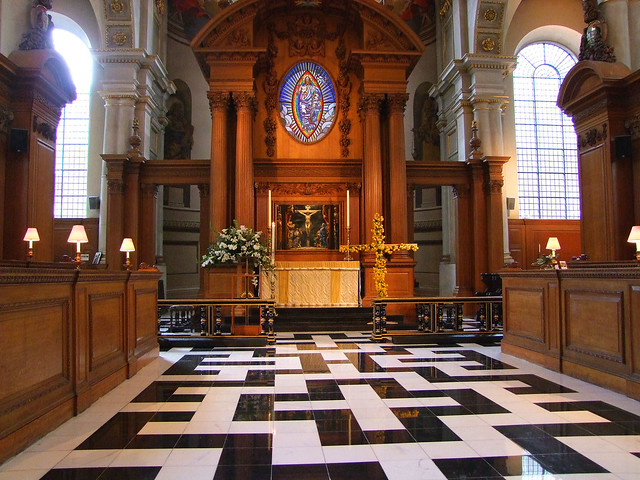| |
|
|
|
|
It's forty years since I first set foot in St Bride's. A
schoolfriend and I were exploring London, taking cheap
day returns down from Cambridge to wander backstreets and
stumble upon wonders. He'd found St Bride's a week or so
before, and hauled me off of Fleet Street into it. First,
the polished, varnished interior, still relatively new
then, and then the surprise of the crypt with its history
of London, particularly of the Great Fire and the Blitz.
I thought it was wonderful, and still do.But in those days Fleet Street was a hive of
newspaper activity, with a sense that this really was the
beating heart of the nation's intellectual life. Now, the
newspapers have gone, and Fleet Street is nothing but a
dull shopping thoroughfare linking Westminster with St
Paul's Cathedral. But St Bride's survives, and thrives.
The medieval church was destroyed
in the Great Fire, and the new church by Sir Christopher
Wren is architecturally perhaps the best of all his
churches, the spire his most famous, as well as being the
tallest, a tiered wedding cake punctuating the space
between St Paul's and the Inns of Court. The church is
shoehorned into a gap behind the shops and offices of
Fleet Street and New Bridge Street, and can be approached
along a number of passageways, some of which come up to
it from below.
St Bride was completely gutted in the firestorm
on the night of 29th December 1940. Only the tower and
parts of the outside walls survived. The rebuilding took
nearly three years under the hand of Geoffrey Allen,
reopening in 1957. Although much of the refurnishing is
Wren-like in style, Allen took the decision not to
rebuild the galleries. The replacement stalls face
inwards in the style of a college chapel. At the east end
is a rather alarming reredos, undoubtedly made in the
language of Wren but so quirky that it is hard to say
what it is actually trying to do. The stalls and
sanctuary are enclosed in wooden screening, creating a
large open area at the west end. The acoustics are very
good.
You can go down into the crypt
which was excavated after the Blitz, and still plays host
to the exhibition, as well as two little chapels, one
remembering the War dead of Fleet Street. It is all
fascinating and moving, and for a moment you get a sense
of the intimate life of central London before
International Finance and Information Technology changed
it forever.
Simon Knott, December 2015
location: Fleet Street EC4Y 8AU - 1/019
status: parish church
access: open seven days a week
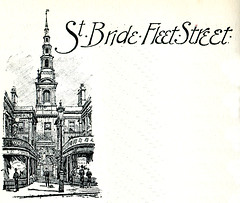 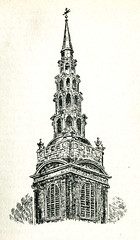 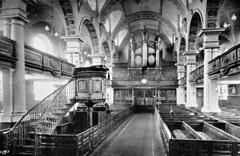 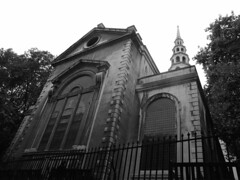 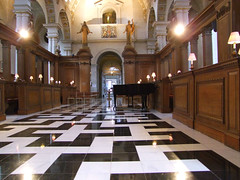 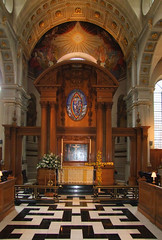 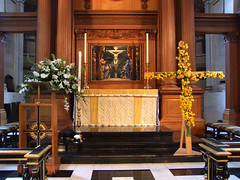 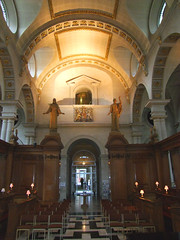 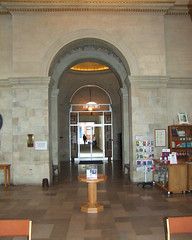 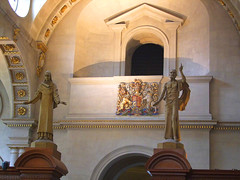 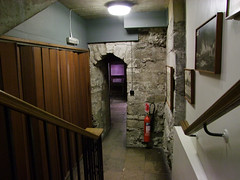 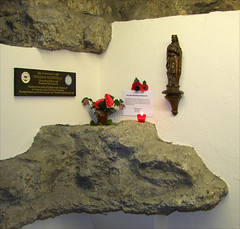 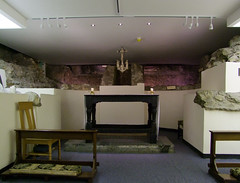 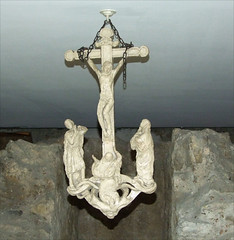 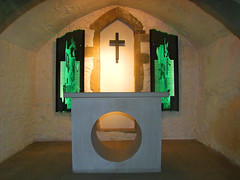 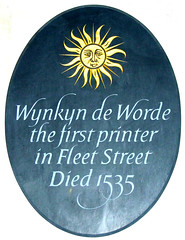 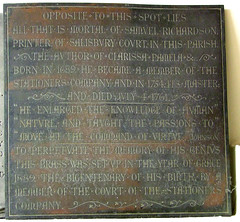 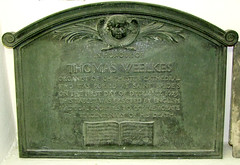 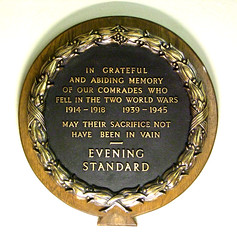 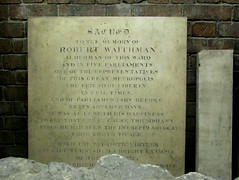 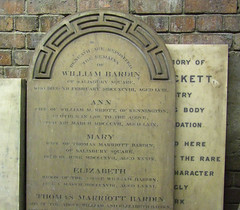
Commission
from Amazon.co.uk supports the running of this site
|
|
|
|
|
|


